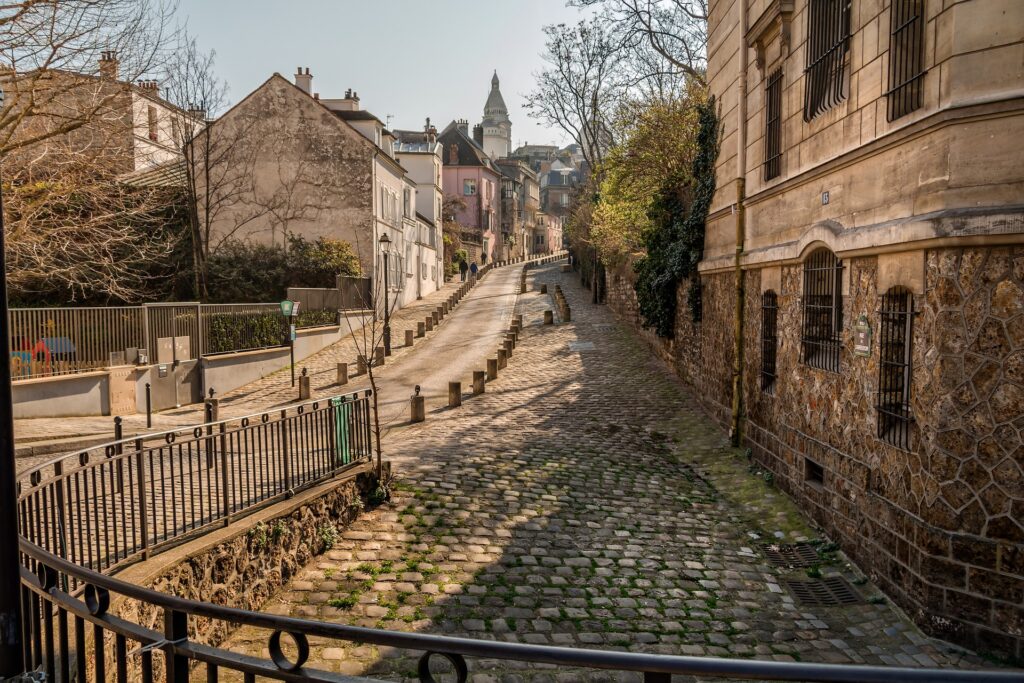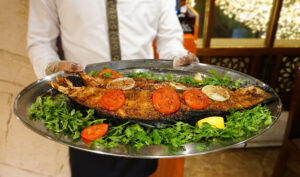I recently found myself out for a walk with a friend, and we decided to take a stroll through the neighbourhood of Montmartre. Today, this neighbourhood is famous for the Sacre Coeur basilica, the countless artists who have made Montmartre their home over the years, and the beautiful views of Paris the neighbourhood provides. None of which, it should be noted, have anything to do with the name Montmartre. So when my friend asked me where the name came from, I knew that the What’s in a Name? series had to continue. This time around, our story begins in the 3rd century, when Paris was called Lutetia and under the rule of the Romans.
It all starts with a quest…
Or perhaps the better word is mission. In the mid-3rd century, a man by the name of Denis was sent on a mission by Pope Fabian. Not much is known about Denis and his early life, but we do know that he was a member of the early Christian church. Under the Pope’s orders, Denis, along with six other Christian missionaries, set out to travel to Gaul in order to convert the Gauls to Christianity. The Roman Emperor at the time, Decius, had been mercilessly persecuting Christians, and Pope Fabian was eager to restore people’s faith in the still relatively new religion. Denis arrived in Lutetia around 250 AD, and immediately began converting the city’s pagan population.
Apparently, Denis was quite successful in his mission. So successful in fact, that he was later recognized as the first Bishop of Paris. Unfortunately, his success drew the attention of local priests, who grew increasingly alarmed at the number of followers Denis was gaining. An investigation by the local Roman Governor was initiated, and before long, Denis and his fellow missionaries were arrested and imprisoned. They were subsequently tortured in an effort to convince them to renounce their faith, but Denis held firm. He adamantly refused to abandon Christianity, and as a result, the local Roman officials decided he was to be executed.
Death was only the beginning…
On the day of his execution, Denis was led far outside Lutetia and up to the top of a hill located to the north of the city. There, the first Bishop of Paris was executed by beheading. However, that is not the end of the story. Legend has it that Denis did not die after the executioner’s sword separated his head from his body. Instead, Denis bent down, picked up his head, and began walking further north, preaching a sermon along the way. He walked for several miles before he finally stopped and met his end. A small shrine was built on the location of his death, which was later expanded into a church, and then an abbey. Today, the beautiful Basilica of Saint Denis now stands on that location.
However, this is still not the end of the story. The legend of Denis and his death spread throughout Gaul almost immediately after his execution. He was venerated by the Christians he had helped to convert, and his fame grew as the centuries passed. In the mid-8th century, the veneration of Denis was finally brought to Rome by Pope Stephen II, and soon after, Denis officially became Saint Denis. His feast day is October 9th, and there are records of this celebration dating back to 800. And that little shrine that eventually became a basilica? It was given the honour of being the burial ground for the Kings and Queens of France for over a thousand years.
Saint Denis and the neighbourhood of Montmartre
So what does all of this have to do with the name Montmartre? Well, you may have picked up on the fact that Denis was executed on a hill to the north of Lutetia. That hill is none other than the neighbourhood of Montmartre today. Or, in other words, the Mountain of Martyrs. This beautiful neighbourhood is named after the first Bishop of Paris who was martyred there in the 3rd century. Meaning the name Montmartre can lay claim to being older than the name of Paris. Today, the Sacre Coeur may dominate the landscape, but there is a statue of Saint Denis in the Square Suzanne Buisson, reminding passersby of Montmartre’s origins.
One more fun fact
Saint Denis, along with Saint Genevieve, is the patron saint of Paris. However, he is also the patron saint of headaches. And no, I am not making that up.
Laura Moore is a professional storyteller who loves history and the many stories that make Paris one of the most fascinating cities in the world. Join one of her signature tours to learn the story of a city.




